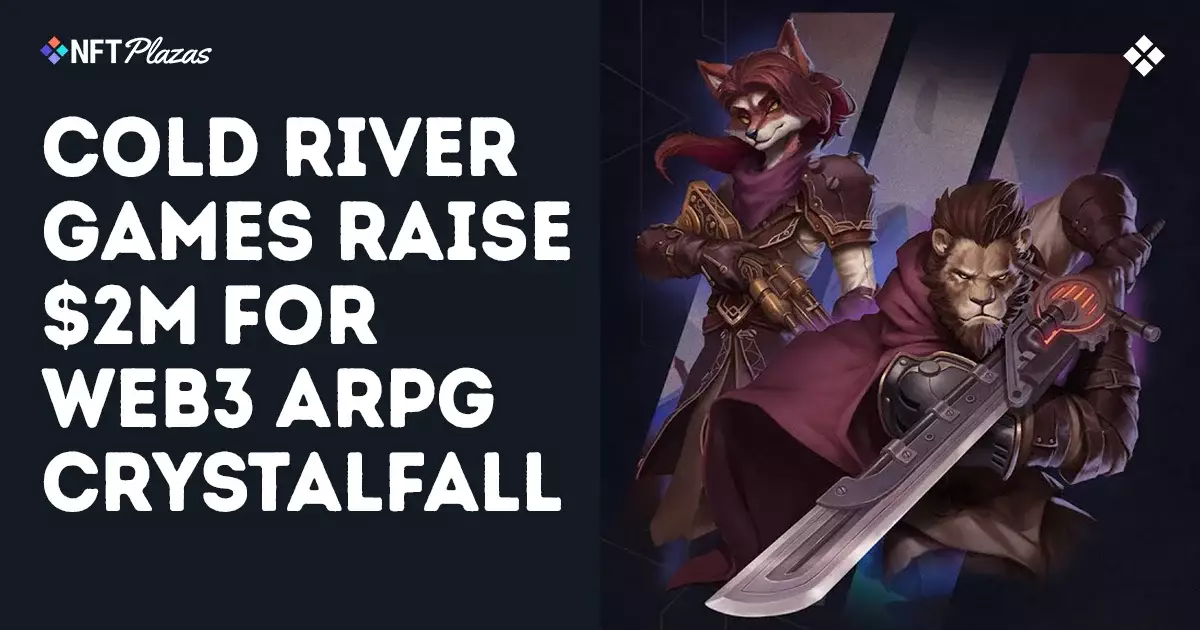In recent years, the gaming industry has been seduced by the promise of blockchain technology—specifically through the proliferation of NFT-based titles and web3 integrations. But beneath the glittering surface of potential revolution lies a sobering reality: much of this enthusiasm is rooted in hype rather than sustainable innovation. Despite the loud proclamations of developers and investors, the actual value of blockchain in gaming remains dubious at best. The latest case in point is Cold River Games’ upcoming title, Crystalfall, which is poised to embed blockchain features deeply into its core mechanics, yet raises critical questions about the genuine utility of such technology within established gameplay frameworks.
Investors and Developers Clash with Practicality
The recent $2 million funding round for Crystalfall, led by Beam Investments, exemplifies the buoyant optimism driving blockchain gaming’s financial bubbles. Such funding booms, often driven by high-profile statements from game creators, obscure the fact that the industry is still grappling with fundamental issues. The decision to harness Avalanche’s blockchain for in-game economies is not inherently wrong, but starkly highlights the tendency of developers to overestimate blockchain’s transformative power. Cold River’s CEO’s claim that “loot progression” and “secure game economies” can be enhanced via blockchain is overly optimistic. In reality, these systems tend to complicate game design, introduce security vulnerabilities, and often alienate traditional players who prioritize straightforward gameplay over digital asset speculation.
The Feigned Innovation Versus Practical Value
The hype surrounding Crystalfall’s web3 features is emblematic of a broader industry pattern that favors spectacle over substance. While Cold River positions the game as an “old-school” ARPG with a steampunk aesthetic, the emphasis on lootable skills and blockchain-backed barter economies suggests that the innovation is more superficial than meaningful. These features—laden with marketable jargon—will likely bear little relevance for the average gamer, who values narrative, balanced gameplay, and immersive worlds over blockchain-powered trading. The danger here is that developers risk sacrificing gameplay purity at the altar of blockchain buzzwords, ultimately diluting the very essence of what makes ARPGs compelling.
The Reality of Venture Capital in Gaming
The narrative of successful fundraising amid a challenging VC landscape adds another layer of skepticism. André’s comments about the “tough market” and “conservative” venture capitalists highlight an undeniable reality: money in blockchain gaming is often driven by speculative enthusiasm rather than long-term viability. While early investments, such as the one in Crystalfall, signal a willingness to experiment, they do not guarantee sustainable growth or consumer acceptance. Too many of these projects are launched on the assumption that blockchain invariably adds value, ignoring the fact that a significant portion of players remain skeptical—and rightly so—about pay-to-earn mechanics and untested digital economies.
A Question of Authenticity and Sustainability
The broader consequence of this blockchain obsession is a potential detachment from authentic gaming experiences. The allure of tokenized assets and blockchain-enabled economies is undeniably attractive on paper, as it promises player ownership and new monetization avenues. Yet, the truth is that many of these systems tend to complicate gameplay, introduce economic inflation, and foster speculative behavior that can undermine game balance and community cohesion. As much as developers like Cold River tout their vision, the long-term success of such hybrid models hinges on genuine utility—not empty marketing promises.
In examining the current wave of blockchain gaming investments and announcements, a critical perspective reveals a pattern of overpromising and underdelivering. Cold River’s Crystalfall offers a glimpse into what could be a grand illusion—an industry bolstered for now by fleeting investor mania rather than substantive innovation. As players and critics alike become increasingly aware of these patterns, it’s clear that true progress in gaming will come not from superficial integrations of blockchain but from a renewed focus on delivering engaging, substantive experiences. Until then, the hype surrounding web3 games remains a fragile veneer masking deeper industry uncertainties.

